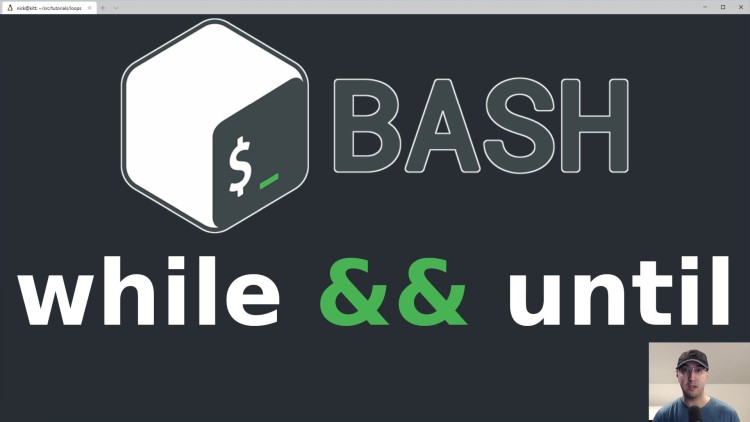3 Practical Examples of Using Bash While and Until Loops

We'll go over using curl to poll a site's status code response, check if a process is running and wait until an S3 bucket is available.
Quick Jump:
In this video we’ll go over mostly 1 liners that you can run on the command line to solve a few specific problems. Once you get comfy using loops you can use them to quickly solve your specific problems too.
# Demo Video
Timestamps
- 0:19 – Using curl to get the HTTP status code of a response
- 1:30 – Executing the curl command every 100ms in a while loop
- 2:27 – Alternatively we can use
while trueand run commands in the loop - 2:54 – Using pgrep to see if unattended-upgrade is finished running
- 5:19 – Using a while loop and pgrep to see if a process is done running
- 6:23 – Using an until loop to check if an S3 bucket was created
- 8:44 – wait-until is a generic version of an until loop with a timeout
- 9:35 – Refactoring the S3 until loop to use the wait-until script
- 10:24 – Recap
Code snippets
Here’s the commands and code shown on video.
Getting the HTTP status code of a response every 100ms with curl using a while loop:
# Return just the status code of the response:
curl -sI -o /dev/null -w "%{http_code}\n" https://example.com
# Run our curl command every 100ms in a while loop:
while curl -sI -o /dev/null -w "%{http_code}\n" https://example.com; do sleep 0.1; done;
# Alternatively this works too:
while true; do echo hello && sleep 1; done;
Using pgrep and a while loop to monitor a process:
# See if unattended-upgrade is running:
pgrep -af unattended-upgrade
# Run our pgrep command every 1 second in a while loop:
while pgrep -af unattended-upgrade; do sleep 1; done;
Checking if an S3 bucket is created before uploading files to it:
#!/usr/bin/env bash
readonly bucket="example"
readonly timeout="3"
echo "Waiting until S3 bucket is created..."
i=1
until aws s3api head-bucket --bucket "${bucket}" 2>/dev/null
do
((i++))
if [ "${i}" -gt "${timeout}" ]; then
echo "${bucket} s3 bucket was never created, aborting due to ${timeout}s timeout!"
exit 1
fi
sleep 1
done
aws s3 sync --exclude="*" --include="*.jpg" . s3://"${bucket}"
Refactoring the above script to use the wait-until script:
#!/usr/bin/env bash
# I forgot to add this which is why the AccessDenied error came up in the end.
#
# It didn't happen in the original version because that script did an exit 1 in
# the script itself so it never got a chance to run the sync command.
#
# Where as in this version wait-until is a separate script that's running so
# we need to make this script exit on any error which is what set -e does.
set -e
readonly bucket="example"
readonly timeout="3"
echo "Waiting until S3 bucket is created..."
wait-until "aws s3api head-bucket --bucket "${bucket}" 2>/dev/null" "${timeout}"
aws s3 sync --exclude="*" --include="*.jpg" . s3://"${bucket}"
Reference Links
- https://github.com/nickjj/wait-until
- https://nickjanetakis.com/blog/wait-until-your-dockerized-database-is-ready-before-continuing
What have you used while and until loops for? Let me know below.